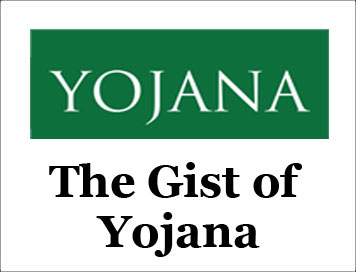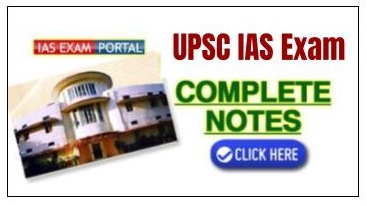(HOT) UPSC Current Affairs 2025 PDF
NEW! The Gist (NOV-2025) | E-BOOKS
(GIST OF YOJANA) INVESTMENT AS AN ENGINE OF GROWTH
GIST OF YOJANA : INVESTMENT AS AN ENGINE OF GROWTH
MARCH-2025
INVESTMENT AS AN ENGINE OF GROWTH
Introduction
Investment stands as a vital force behind economic development, significantly contributing to productivity enhancement, job creation, and innovation stimulation. The Union Budget 2025-26 highlights investment as the 'third engine' of progress, alongside agriculture, MSMEs, and exports. This investment-centric strategy rests on three foundational pillars—focusing on people, economic growth, and innovation—aimed at steering India towards the aspiration of 'Viksit Bharat 2047.'
Investing in People
Allocating resources to human capital is crucial for social and economic transformation as well as inclusive progress. The government has launched various initiatives to improve education, healthcare, and skills acquisition:
(i) Education and Skill Development
-
Atal Tinkering Labs: 50,000 laboratories to be set up in government institutions within the next five years to cultivate scientific interest.
-
IIT Expansion: Reinforcement of the infrastructure of five IITs, increasing student capacity by 6,500.
-
Bharatiya Bhasha Pustak Scheme: Digital literature in Indian languages to promote learning in regional dialects.
-
Artificial Intelligence (AI) Centres: Rs 500 crore allocated for establishing Centres of Excellence in AI focused on education.
-
National Centres for Skilling: Five centres to be set up for international collaboration in manufacturing-related training.
(ii) Healthcare and Nutrition
-
Medical Education Expansion: An addition of 10,000 medical seats in colleges, with plans for 75,000 more in the next five years.
-
Cancer Treatment: Establishment of 200 district-level day-care cancer facilities by 2025-26.
-
Nutrition Support: Under Saksham Anganwadi and Poshan 2.0, nourishment provided to:
- 8 crore children
- 1 crore pregnant and nursing women
- 20 lakh adolescent girls
-
Gig Worker Welfare: Revised PM SVANidhi Scheme featuring a UPI-linked credit card (Rs 30,000 limit) and healthcare provisions.
Investing in the Economy
-
Economic investments, especially in infrastructure and urban development, serve as a catalyst for sustainable advancement. The budget includes significant allocations for public-private partnerships, state-level capital investments, and urban revitalization.
(i) Infrastructure Development
-
50-Year Interest-Free Loans: Rs 1.5 lakh crore designated for capital expenditure incentives to states.
-
PPP Model Expansion: Ministries to create three-year project pipelines under public-private collaborations.
-
Asset Monetisation Plan: Rs 10 lakh crore investment initiative (2025-30) for new infrastructure developments.
(ii) Urban Development & Housing
-
Urban Challenge Fund: Rs 1 lakh crore for urban redevelopment projects.
-
SWAMIH Fund 2: Rs 15,000 crore for completing 1 lakh housing units.
-
Jal Jeevan Mission: Extended until 2028 with a Rs 67,000 crore allocation.
(iii) Tourism and Transport
-
Tourism Development: Top 50 tourist sites to be developed in partnership with states.
-
UDAN 2.0: Expansion of air connectivity to 120 additional destinations.
-
Shipbuilding Industry: Updated financial assistance policy and establishment of 'Shipbuilding Clusters.'
-
Maritime Development Fund: Rs 25,000 crore to support long-term financing of the maritime sector.
-
Nuclear Energy Mission: Rs 20,000 crore allocated for research and development on small modular reactors (SMRs).
Investing in Innovation
Innovation forms the backbone of a knowledge-driven economy. The government prioritizes research and development, technological progress, and digital initiatives to boost India’s global standing.
(i) Research and Development
-
Rs 20,000 crore allocation for private sector-led research and innovation.
-
Deep-Tech Fund of Funds aimed at supporting next-generation startups.
-
10,000 PM Research Fellowships for IIT and IISc scholars.
-
National Geospatial Mission for improved urban planning and land record management.
(ii) Agricultural Innovation
-
2nd Generation Bank: 10 lakh germplasm lines aimed at bolstering food security and conserving genetic resources.
-
National Digital Repository of Indian Knowledge Systems (IKS): Documenting and conserving over 1 crore manuscripts.
Way Forward: Vision for Viksit Bharat 2047
The Union Budget 2025-26 aligns investments with the long-term vision of transforming India into a developed nation by 2047. Core areas of emphasis include:
-
Fortifying human capital through education and skill enhancement.
-
Advancing infrastructure and urbanization for economic change.
-
Promoting technological innovation to establish a competitive global economy.
-
Ensuring social equity and inclusiveness through welfare initiatives and job creation.
Conclusion:
This strategic blueprint is designed to facilitate sustainable and inclusive growth, reinforcing the 'Sabka Saath, Sabka Vikas' ethos. By channeling investments in human resources, infrastructure, and innovation, India has the potential to emerge as a global economic leader, setting a standard for the Vishwamanav Model of development in the 21st century.
CLICK HERE TO DOWNLOAD FULL PDF
CLICK HERE TO DOWNLOAD UPSC E-BOOKS
Study Material for UPSC General Studies Pre Cum Mains
Get The Gist 1 Year Subscription Online
Click Here to Download More Free Sample Material
<<Go Back To Main Page
Courtesy: Yojana



